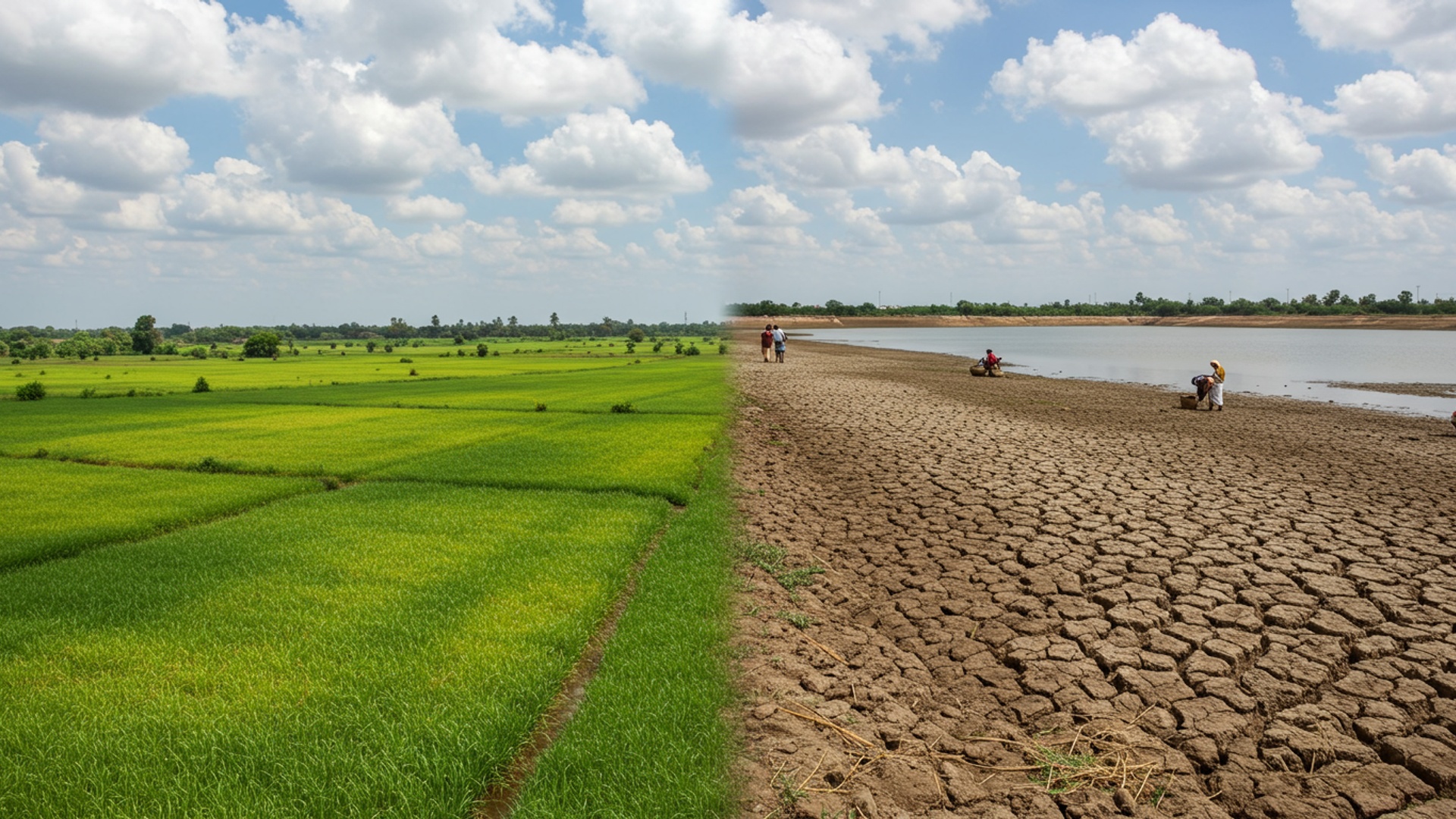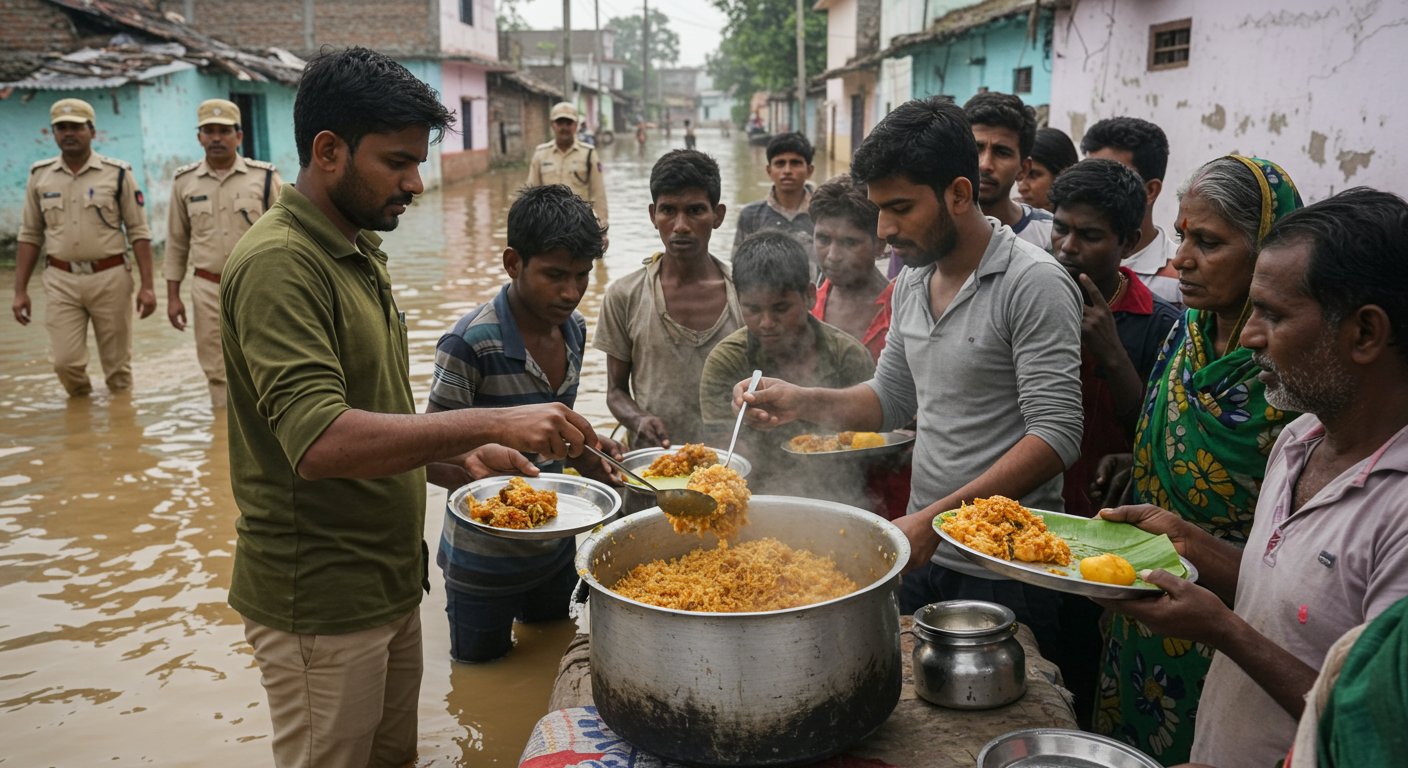Tamil Nadu faces a critical water outlook as this year’s monsoon delivers a mixed performance, leaving many key regions with a significant rainfall deficit. While some areas experience moderate showers, a vast portion of the state grapples with dry conditions, sparking serious concerns among farmers struggling to sustain their crops and city dwellers worried about water supply. This uneven and insufficient rainfall puts immense pressure on the state’s vital reservoirs, raising fears of a deepening water crisis if the heavens fail to deliver soon.
Understanding Monsoon Patterns
Tamil Nadu experiences unique rainfall patterns compared to many other parts of India. While much of the country heavily depends on the Southwest Monsoon, which occurs from June to September, Tamil Nadu gets a significant portion of its yearly rainfall from the Northeast Monsoon, which happens from October to December. The Southwest Monsoon brings winds from the Arabian Sea, leading to rain on the western slopes of the Western Ghats mountains. But, due to a “rain shadow” effect, most of Tamil Nadu receives less rain during this period. This monsoon still plays a vital role in filling water bodies and charging underground water in the western and southern districts of the state. The average yearly rainfall for Tamil Nadu is about 945 millimeters. this can change a lot from one part of the state to another. Coastal areas generally receive more rain, especially during the Northeast Monsoon, while interior districts often see less. The state’s farming relies completely on these rains to fill its water sources, so if the monsoons fail, it can lead to severe water shortages and dry spells. Over time, climate experts have observed that monsoon patterns in Tamil Nadu are becoming less predictable, with short dry periods followed by very heavy rain. This makes water collection and storage even more essential for the state.
Current Rainfall Status
As of mid-August 2025, Tamil Nadu has seen a mixed performance from the Southwest Monsoon. The India Meteorological Department (IMD) reported an overall rainfall deficit of about 12% for the state during this period. While the IMD’s seasonal analysis for the 2025 Southwest Monsoon stated that overall rainfall stood at 96% of the long-period average, classifying it as “normal,” this figure masks uneven distribution across the state. Some areas have received good rain, while others are facing worrying shortages. For instance, southern districts such as Theni, Virudhunagar. Tirunelveli have received steady rain. In contrast, northern parts of the state, including Chennai, have seen limited rainfall, leaving many residents and farmers waiting for more. Data from mid-July 2025 showed that interior and delta districts like Karur, Tiruchirappalli, Nagapattinam. Thanjavur were facing significant rainfall deficits, some as high as 30% to 39%. Meanwhile, western and hilly districts like Nilgiris, Coimbatore. Dindigul recorded surplus rainfall. This patchy and uneven rainfall distribution is a major concern.
| Region | Rainfall Status (Mid-August 2025) | Departure from Normal |
|---|---|---|
| Western Tamil Nadu | Normal | +4% |
| Southern Tamil Nadu | Excess | +15% |
| Northern Tamil Nadu | Deficient | -21% |
| Coastal Tamil Nadu | Highly deficient | -34% |
| Overall Tamil Nadu | Deficient | -12% |
The overall rainfall deficit for Tamil Nadu by mid-August 2025 was approximately 12%, with significant regional differences observed across the state.
Impact on Farm Lands
The inconsistent rainfall patterns have directly affected farming activities across many districts in Tamil Nadu. In regions with rainfall shortages, especially the delta zone, farmers have delayed or held back from sowing their crops. This delay can lead to smaller harvests or even crop failures if the planting window closes too soon. Key crops like rice, maize. legumes are particularly vulnerable, with climate change impacts, including irregular rainfall and heat stress, leading to reduced yields. For farmers who rely solely on rain for their crops, the anxiety is growing. The Agriculture Department is advising farmers to choose short-duration crop varieties and crops that can withstand dry conditions, like millets, especially in areas where soil moisture is low. This shift aims to help farmers cope with the unpredictable nature of the monsoon. On a positive note, farmers in southern districts have been able to move forward with planting paddy and pulse crops due to better rains in their areas. Despite these challenges, farmers are trying new ways to adapt, such as building small wells, collecting rainwater. using faster planting methods.
Water Storage Levels
The performance of the monsoon directly impacts the water levels in reservoirs, which are crucial for irrigation and providing drinking water across the state. As of August 15, 2025, while some major reservoirs are showing below-normal levels, the Mettur Dam, a key water source, is in a better position. On August 11, 2025, the water level in the Mettur Stanley Reservoir was reported at 118. 20 feet, close to its full capacity of 120 feet. Its storage level was 90. 62 tmc ft out of a full capacity of 93. 47 tmc ft. Inflow into the dam had reduced. officials noted that water discharge for delta irrigation was also reduced because of recent rains in the delta districts, lessening the demand for irrigation water. By August 12, 2025, the Mettur Dam’s water level had further risen to 118. 63 feet, with increased inflow of 16,288 cubic feet per second. This indicates a relatively healthy water situation for this critical dam. But, other reservoirs such as Bhavanisagar was at 55% of its capacity (normal). Vaigai Dam at 38% (below normal). Sathanur Dam at 47% (below normal). Lower storage levels in these dams could affect irrigation if rainfall does not improve in their respective catchment areas.
Government Measures Taken
The Tamil Nadu government has been actively preparing for the monsoon season and its potential effects. In May 2025, Chief Minister M. K. Stalin held a meeting with officials to review the state’s readiness. During this meeting, plans were made to equip relief centers with food, water. electricity to be ready for use if needed. The Chief Minister also instructed district officials to ensure that District Emergency Centres operate 24 hours a day, maintain strong communication systems. keep rescue equipment ready. Special focus was placed on coastal districts to prepare for heavy rains and cyclones. Moreover, instructions were given to ensure that water from the Mettur Dam reaches farming areas at the very end of the irrigation network. The Agriculture Department was also tasked with making arrangements for different types of farming, such as “kar,” “kuruvai,” and “sornavari” cultivations. to speed up work to clear silt from water channels. Officials were also advised to ensure that farmers have access to all necessary farming supplies. The government is also looking at long-term solutions, having developed the Tamil Nadu State Action Plan on Climate Change for 2023-2030 and set up a ₹1,000 crore Green Fund to support projects that reduce the impact of climate change.
Looking Ahead
The coming weeks are crucial for Tamil Nadu as the state continues to navigate the mixed performance of the monsoon. While some areas have received adequate rainfall, the existing deficits in many interior and northern districts remain a concern for farmers and water managers. The India Meteorological Department forecasts suggest a possible increase in rainfall in late August, which could bring some relief to the eastern and delta regions. The long-term trend shows that monsoons in Tamil Nadu are becoming more uncertain, with sudden dry spells followed by intense downpours. This makes it even more vital to plan for water storage and manage water resources carefully. If the rains do not improve, the government might need to put in place stronger water management steps and issue more advisories for crop planting. While a state-wide drought has not been declared, the possibility remains if the rainfall shortage continues to grow. This situation highlights the importance of timely and well-informed decisions for the state’s agriculture and water security. ![]()










